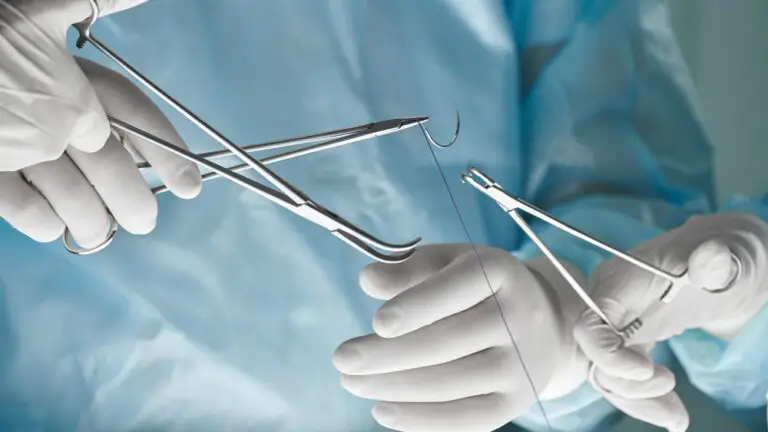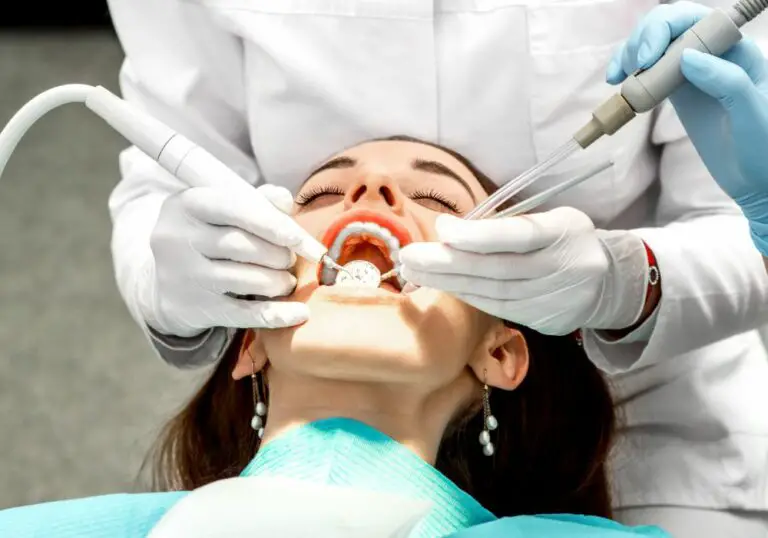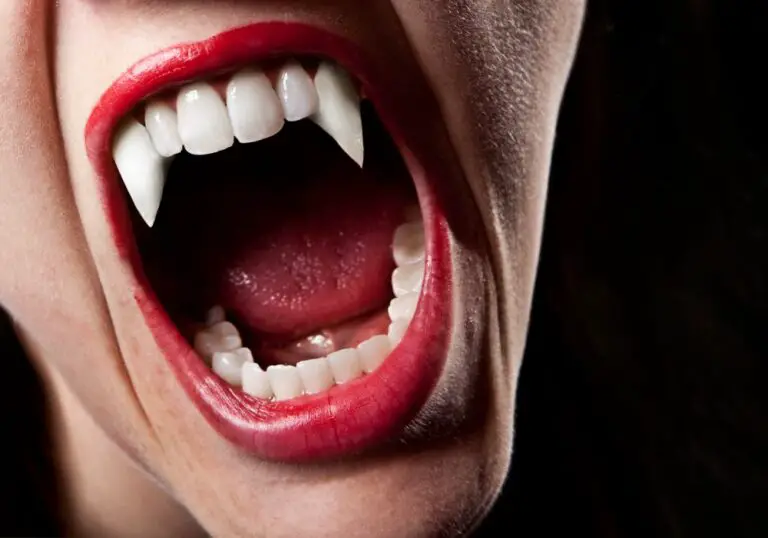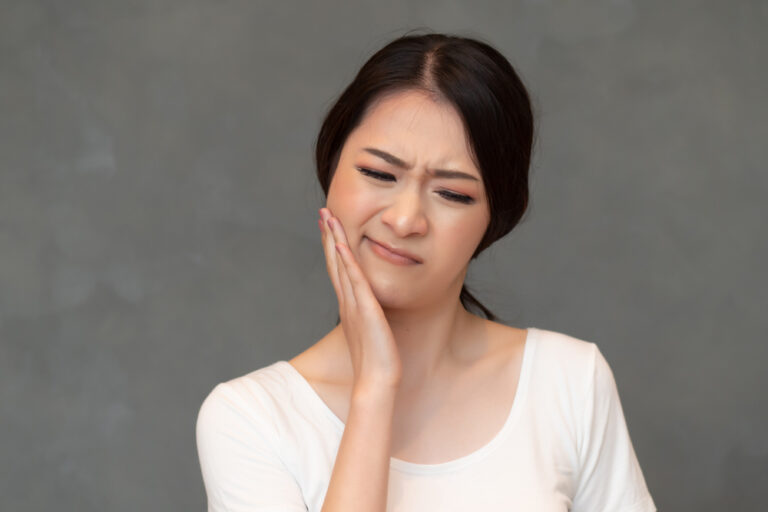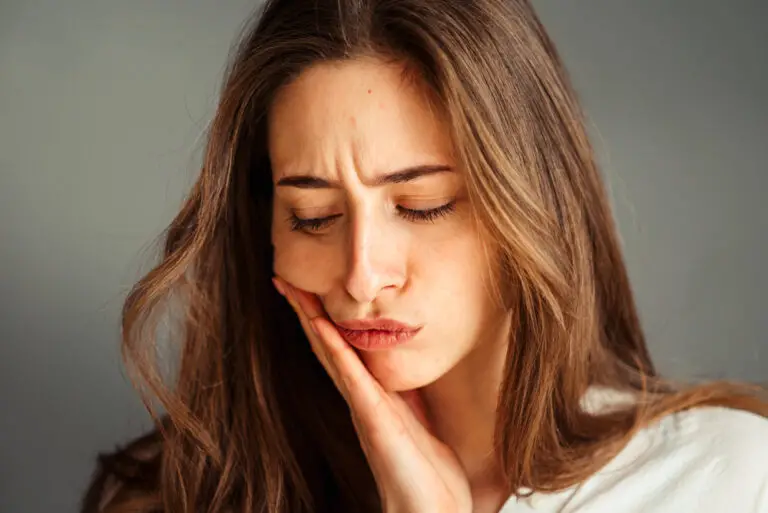For many people, wearing braces to correct crooked teeth is an essential step in achieving the perfect smile they’ve been dreaming of – but while you’re wearing them, there are certain problems you might have to face, and one of them is the braces causing your teeth to stain.
If this sounds familiar, you’re probably wondering what you can do about it, so to help, in this post, we talk about how to whiten teeth with braces to give you all the info you need.
For some extra tips and a preview of some of the things we’re going to be talking about, you can also check out this video before reading on.
Why do braces stain your teeth?
Before we talk about your teeth whitening options with braces, let’s say a few words about why braces stain teeth – because the chances are, if you’re reading this, you’re interested in ridding yourself of the stains that have appeared since you’ve been wearing braces.
Although braces are great for straightening teeth and improving your smile, while you’re wearing them, they can make it more difficult to keep your teeth clean.
The problem with braces is that they make it much easier for pieces of food to become stuck in your mouth between the brackets and the wires, and this in turn makes it easier for plaque to build up.
At the same time, it also makes it more difficult to brush your teeth to remove plaque and bacteria, and any plaque you miss can quickly harden into tartar.
Then, once tartar deposits begin to form, these can stain easily, quickly giving you the appearance of discolored teeth.
What are the different types of braces?
If you notice discoloration that seems to be due to your braces, you’ll be wondering about your options for removing the stains – but the ways available to you will depend on the kind of braces you wear.
Traditional braces consist of a wire and brackets that are attached to the front of the teeth. They are the most visible type of braces, and they also create the most problems when it comes to whitening since they make it difficult to clean or whiten the front of the teeth.
Lingual braces are similar to traditional braces in that they are based on a wire and brackets that are attached to your teeth.
However, with this kind of braces, the brackets are attached to the back of the teeth instead of the front, making them much less visible. They also offer certain advantages over traditional brackets in the kind of movement they can offer for your teeth.
At the same time, they make it easier to keep the front of your teeth white and stain-free since the braces don’t block access to the front of your teeth.
Finally, there are clear removable braces. These consist of a clear mold that is placed over the teeth to gradually move them into place.
As far as cleaning and whitening is concerned, this is the most convenient type since you can simply remove your braces to clean your teeth. They are also increasingly popular nowadays since they are unobtrusive and hardly visible in the mouth.
What are your options when it comes to whitening your teeth with braces?
So now let’s move on to how to whiten your teeth if you wear braces.
1. Whitening strips
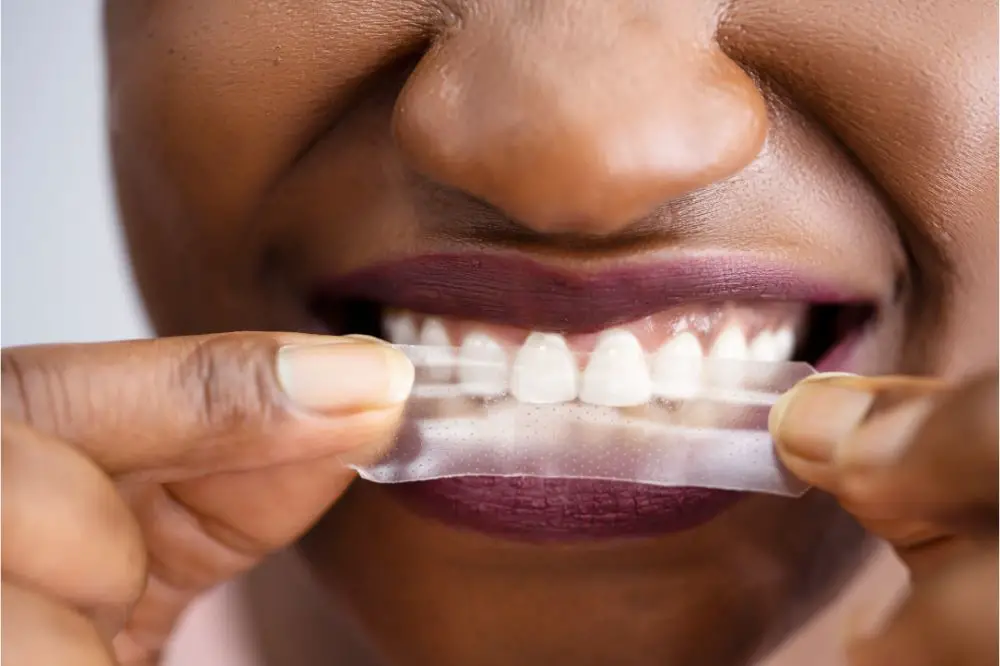
Whitening strips consist of strips impregnated with hydrogen peroxide or another kind of stain removal agent. They are cut out and placed over the teeth and then left there for around ten minutes.
After each treatment, you remove the strips and thoroughly clean your mouth with water, repeating the treatment twice daily for up to a month until you achieve the desired results.
Whitening strips are popular because they are affordable yet effective.
You can use whitening strips to whiten your teeth if you wear lingual or removable clear braces, but they aren’t a viable option if you have traditional metal braces on the front of your teeth.
This is because you won’t be able to place the strips on your teeth correctly, and if you try, you will only end up whitening your teeth irregularly.
- Lingual braces: Yes
- Clear removable braces: Yes
- Traditional metal braces: No
2. Whitening trays
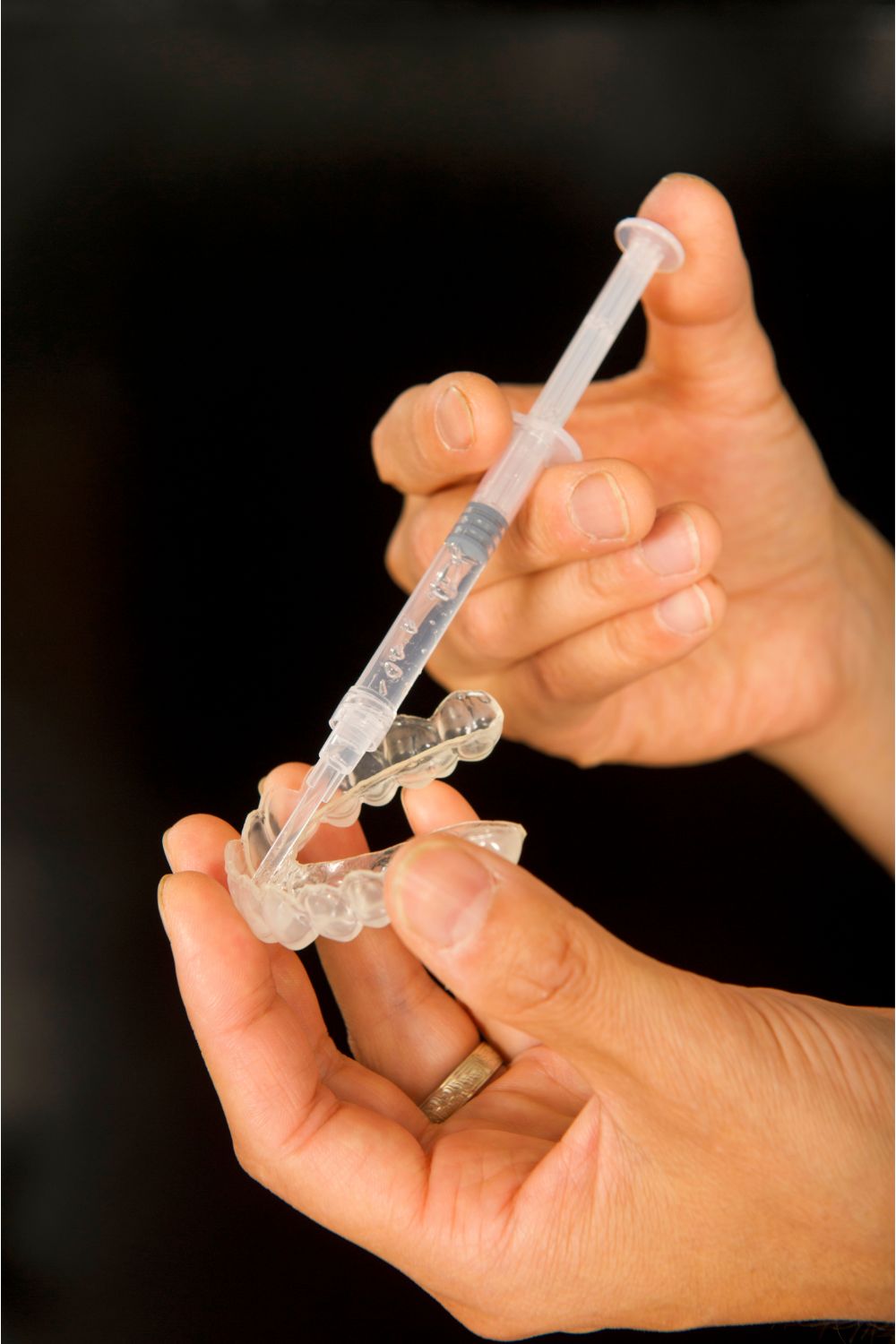
Whitening trays are a similar concept to strips, but instead of a strip that you stick to your teeth, they consist of a clear mold that you place over your teeth.
The mold contains hydrogen peroxide (or a similar whitening agent), and the trays are left on for several hours for each treatment.
The trays are disposable, and you use a new one each day. With most treatments, you usually wear one a day for two weeks or up to a month.
If you wear lingual or removable braces, you can use whitening trays to brighten up your teeth – they fit over lingual braces, and with removable braces, you just take out the braces while you use the tray, and then switch back once the treatment is finished for the day.
With trays, it’s also possible to wear them overnight. You can do this if you have lingual braces, but you might not want to do this with removable clear braces since it would mean leaving your braces out for too long.
Unfortunately, this kind of treatment won’t work with traditional braces since the tray won’t fit over the wire and brackets that are attached to the front of your teeth.
- Lingual braces: Yes
- Clear removable braces: Yes
- Traditional metal braces: No
3. Whitening toothpaste or mouthwash
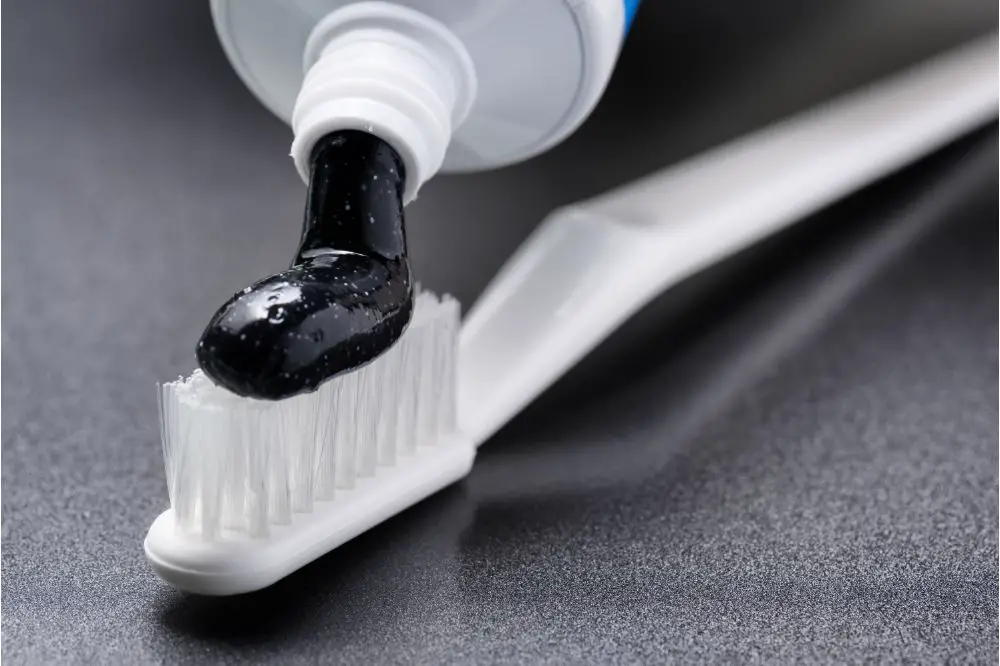
A simple technique for whitening teeth is to use a whitening toothpaste, and this method works with all types of braces.
Most whitening toothpastes contain tiny abrasive particles that help scrape off any stains on your teeth.
The key to finding a good whitening toothpaste is to choose one that is abrasive enough to remove the stains from but not so abrasive that it also damages the enamel.
Other versions contain hydrogen peroxide instead of abrasive particles, in which case, the toothpaste works more like strips or trays.
Another similar option is to use whitening mouthwash, a type of mouthwash that contains a low concentration of hydrogen peroxide. With this, you simply swill it around your mouth before spitting, and the hydrogen peroxide helps whiten your teeth.
Mouthwash can also be used with all kinds of braces.
- Lingual braces: Yes
- Clear removable braces: Yes
- Traditional metal braces: Yes
4. Electric toothbrush
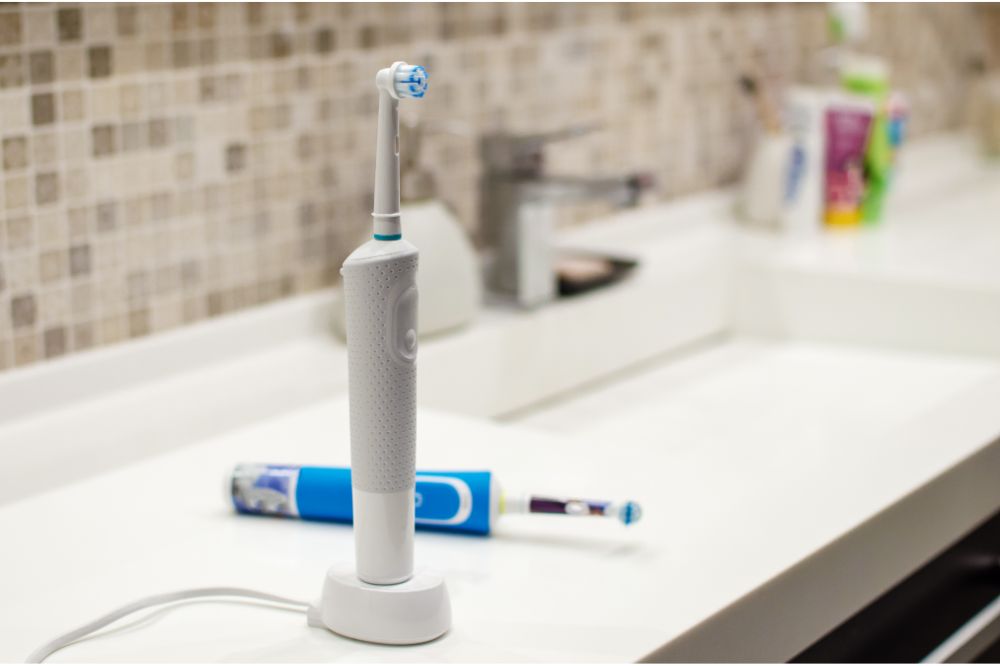
Another perhaps less extreme option for trying to keep teeth white and removing stains while wearing braces is to switch from a manual toothbrush to an electric one – something that many dentists recommend anyway.
Electric toothbrushes are more effective at cleaning teeth than manual ones, and as a result, they do a better job of dislodging food particles.
One advantage of this method is that it can be used with all types of braces, and it also has the advantage of not relying on chemicals or abrasive particles.
However, this idea may be more effective at preventing stains than removing them once they are already present.
- Lingual braces: Yes
- Clear removable braces: Yes
- Traditional metal braces: Yes
How to minimize staining while wearing braces
Although it’s possible to whiten teeth that have become stained through wearing braces, it can be complicated, and it’s much better to prevent stains from developing in the first place – and here are some things that can help.
-
Brush and floss regularly
The first thing you can do to prevent stains is simply to stick to a proper dental health routine that involves brushing at least twice a day and flossing at least once a day.
This will help prevent the build-up of plaque, and it will also help clean out any food particles that have become stuck in your braces.
If you are serious about keeping your teeth stain-free, you may also consider brushing after every time you eat.
-
Rinse your mouth after eating or drinking
You can also reduce the chances of stains developing if you rinse your mouth with water for two minutes after each time you eat – especially if you consume anything known to cause stains such as red wine, coffee or curry.
-
Use an interproximal brush
An interproximal brush is a small brush that can help clean more effectively in between the gaps in your teeth and around the braces’ brackets – and using one will help reduce the chances of stains developing.
-
Use an electric toothbrush
As mentioned above, an electric toothbrush can help remove stains – but using one is also an excellent way to prevent the stains from appearing in the first place.
-
Avoid foods and drinks that stain
While you are wearing braces, you may also want to cut down on or cut out completely anything that is likely to cause stains – at least until you have your braces removed.
Plenty you can do – but prevention is better than a cure
If you’ve found that wearing braces has caused your teeth to develop stains, you can try some of the techniques we’ve talked about in this post to try to rectify the problem.
However, if it’s not too late, you should think more about what you can do to stop the stains appearing in the first place – since, as ever, prevention is better than a cure.

